
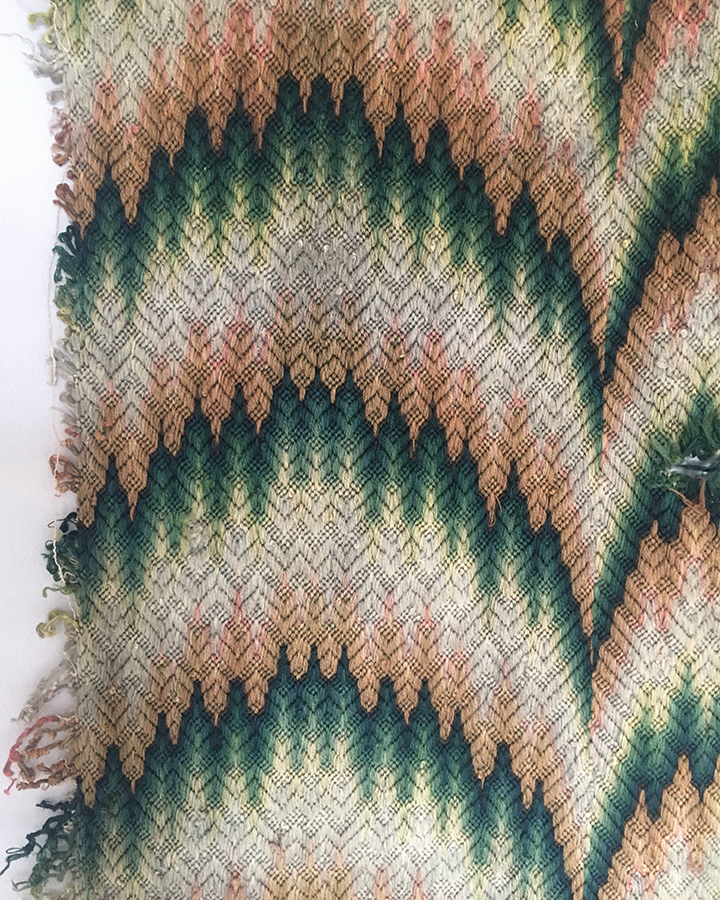
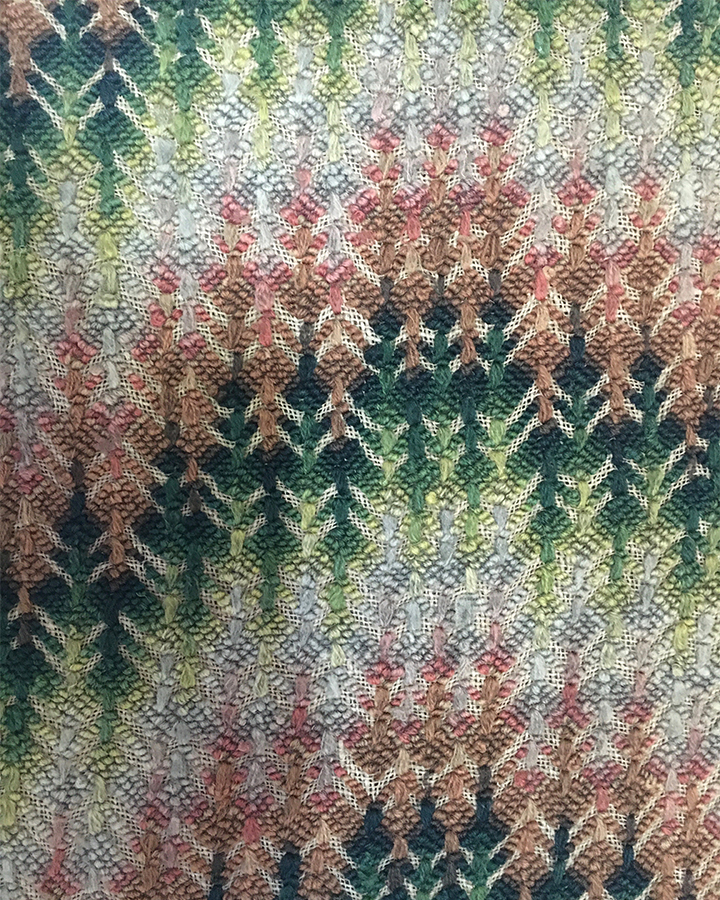
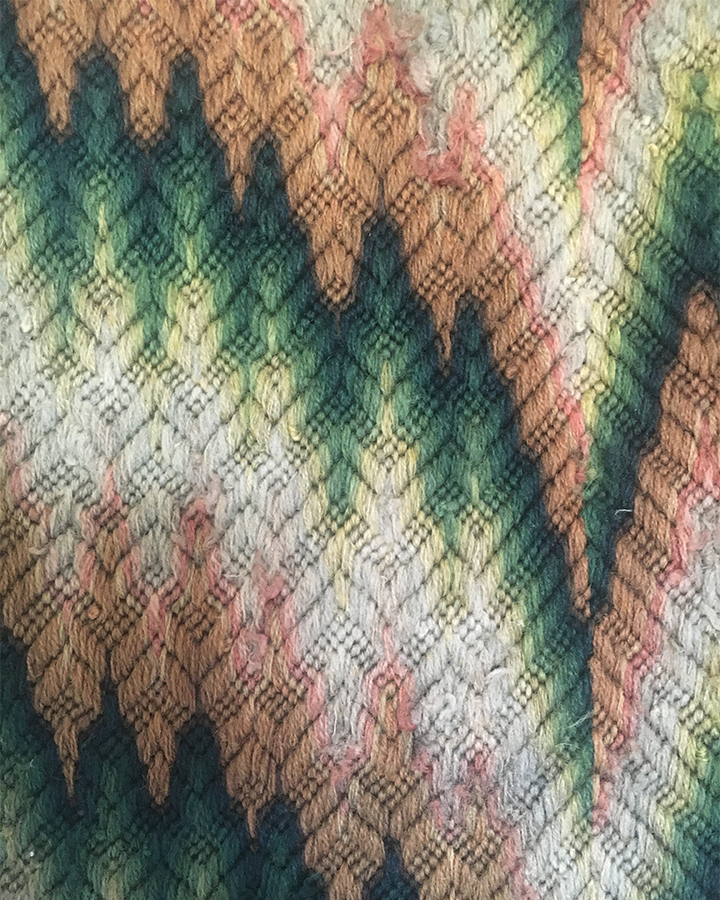
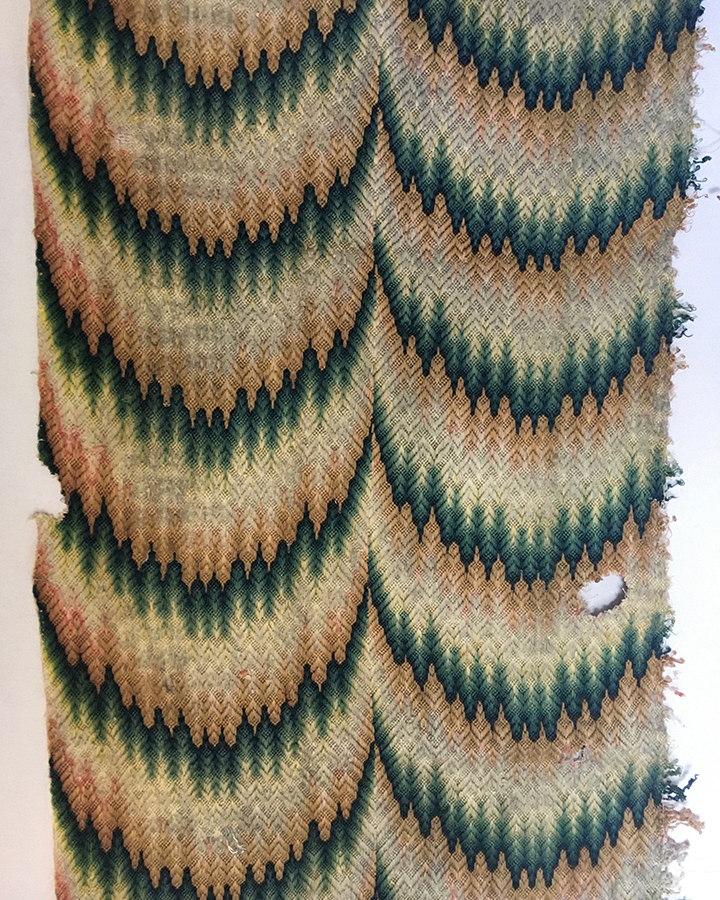
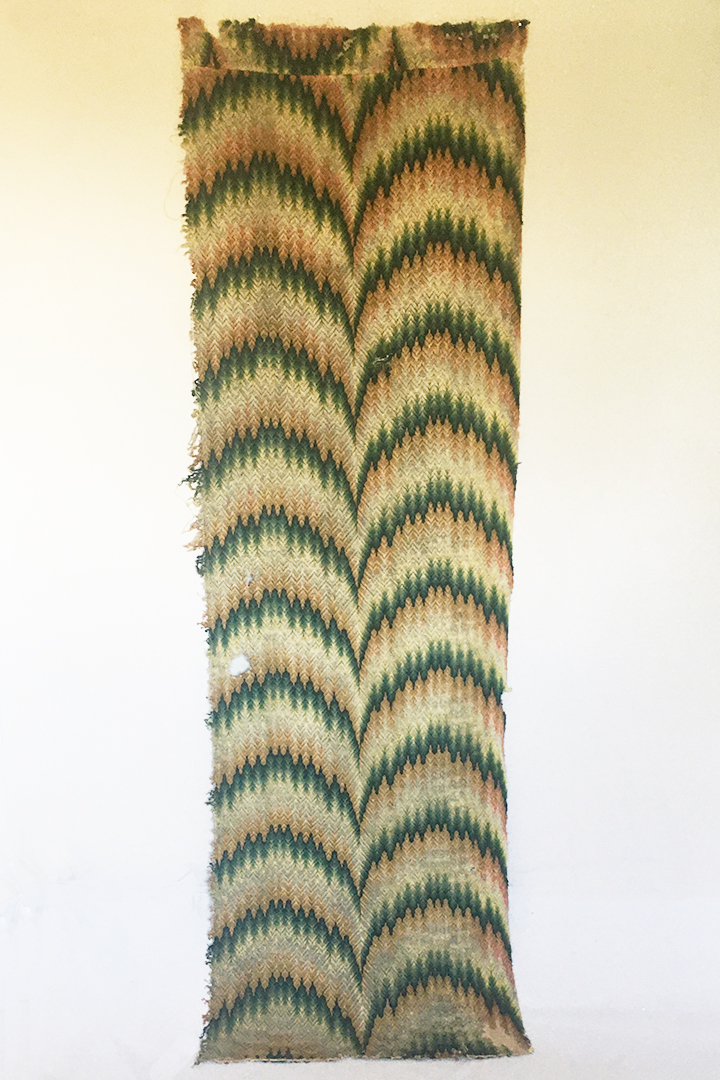
Bargello work was particularly popular for furnishings during the Italian Renaissance, embroidered in Florence, hence being called Florentine work. It is not clear which termonology is correct, as different descriptions can be used. This type of work is also called Flamestitch, Irish stitch or Point d'Hongire. Popular during the the seventeenth and eighteenth century and often worked by ladies of the house.
The loose canvas did not require a pattern drawn onto it, and the ground could be quickly covered with floss silks or wools, using long and short stitches, with a blunt tipped needle, in a zig zag or flamestitch design. The embroiderer did have to concentrate very hard to not make mistakes. During the 18th c a greater number of colours were used. Popular as wall or bed hangings and for upholstery.
The backs of both these lengths is very attractive and have slightly more colour. They would look great used this side up!
With curving flamestitch using shades of dark green, red, tan, and natural wools on a canvas ground.
The first panel has a single width large scalloped flamestitch.
1. 6ft 3 x 17 in; 1.90 x 43 cm
The second wider panel has a double width large scalloped flamestitch.
2. 6ft 3 in x 2ft 1 in; 1.9 x 63 cm.
Both panels have lost a little of the colour red, but really not very noticeable.
1. The first panel has a large hole 10 1/2 x 2 1/2; 27 x 6.5 cm.
2. The second wider piece has a 3 inch area to top left which has no wools. There is a 2 in x 2 in; 5 x 5 cm hole. This is to the right hand side 31 in; 80 cm from the top. There is another very small hole1 1/2 in; 3 cm in size just below. Another further down of same size 20 in; 50 cm from the bottom of the piece near the centre.
Fine examples can be found at many country houses in the UK including:
Parham Park, West Sussex. In the West Room there is a dado hanging of Italian wool, in Flamestitch design (1560-85). The Ante-Room has a Hungarian Point needlework in silk and wool, 17th century. In the Green Chamber there are flame stitch bed hangings dating to c 1620.
National Trust Chastleton House, Oxfordshire has a set of flamestitch or 'Irish stitch' hangings from seventeenth century on the walls in the Fettiplace Closet. Worked in twelve colours on a jute ground, these are almost certainly the bed hangings, listed in 1633, as covering beds and seat furniture.
Clandon Park, Surrey for bedhangings and chair coverings.
Lady Anne Clifford in her diary of 1619 tells of the 'Irish stitch cushion' she worked when incarcerated at Knole.*
* The National Trust Book of Furnishing Textiles by Pamela Clabburn 151.
Guide books to Parham, Chastleton House.
All images and text © meg-andrews.com 2021